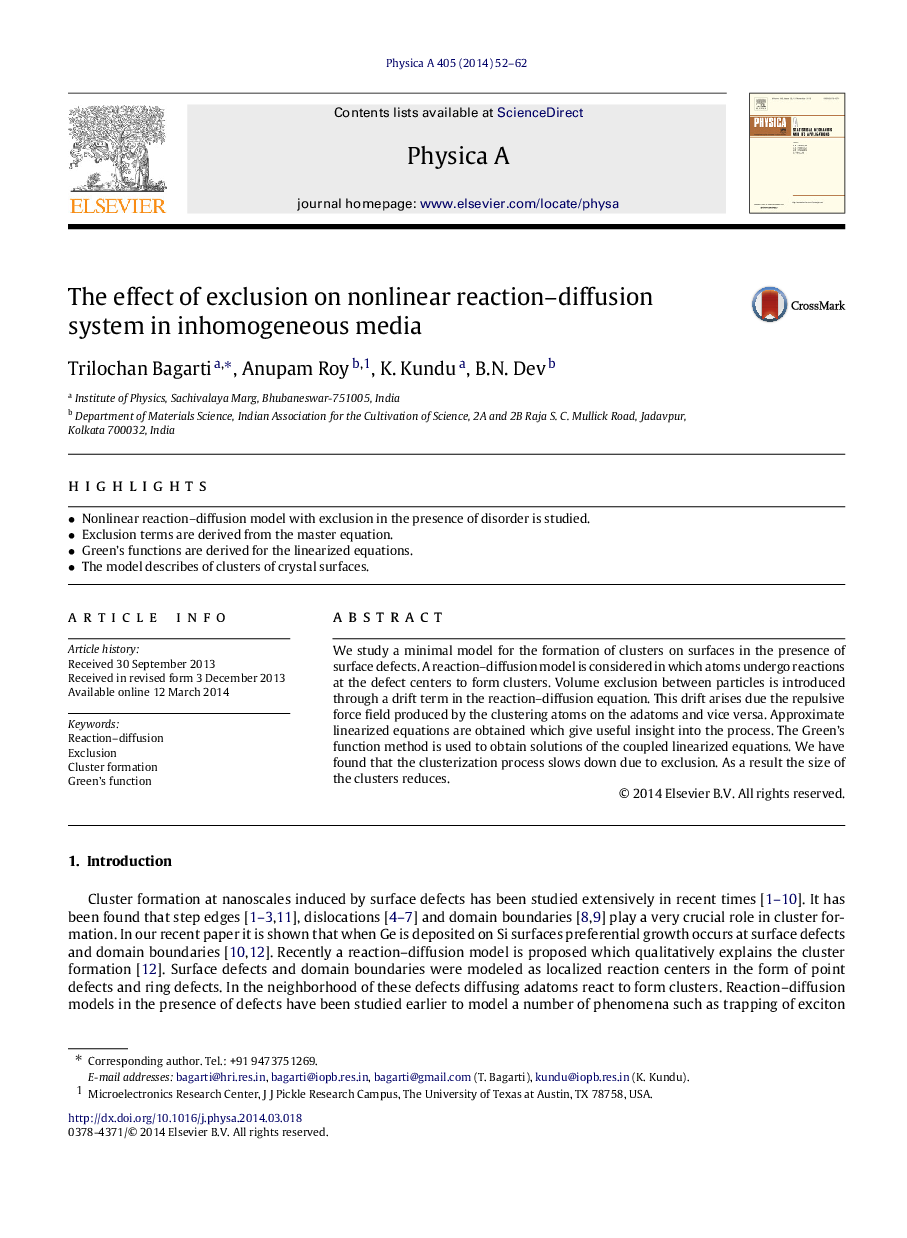| Article ID | Journal | Published Year | Pages | File Type |
|---|---|---|---|---|
| 977314 | Physica A: Statistical Mechanics and its Applications | 2014 | 11 Pages |
•Nonlinear reaction–diffusion model with exclusion in the presence of disorder is studied.•Exclusion terms are derived from the master equation.•Green’s functions are derived for the linearized equations.•The model describes of clusters of crystal surfaces.
We study a minimal model for the formation of clusters on surfaces in the presence of surface defects. A reaction–diffusion model is considered in which atoms undergo reactions at the defect centers to form clusters. Volume exclusion between particles is introduced through a drift term in the reaction–diffusion equation. This drift arises due the repulsive force field produced by the clustering atoms on the adatoms and vice versa. Approximate linearized equations are obtained which give useful insight into the process. The Green’s function method is used to obtain solutions of the coupled linearized equations. We have found that the clusterization process slows down due to exclusion. As a result the size of the clusters reduces.
